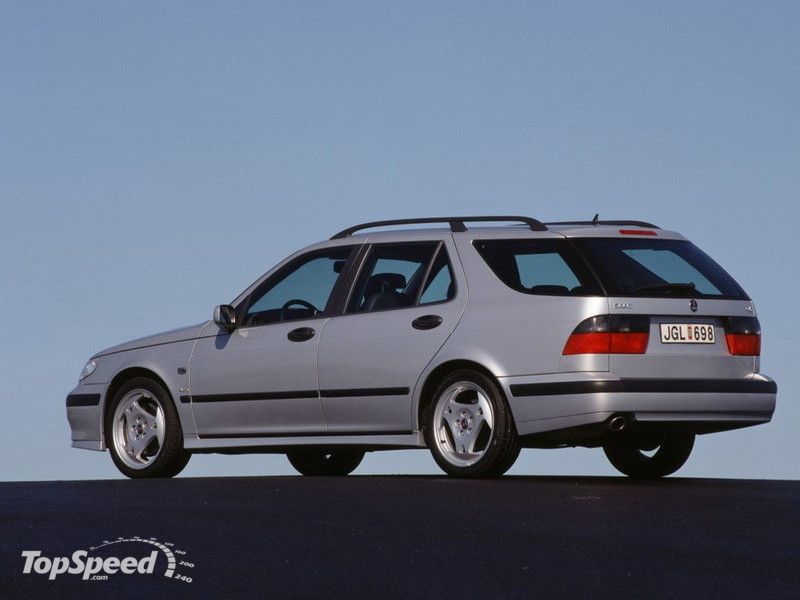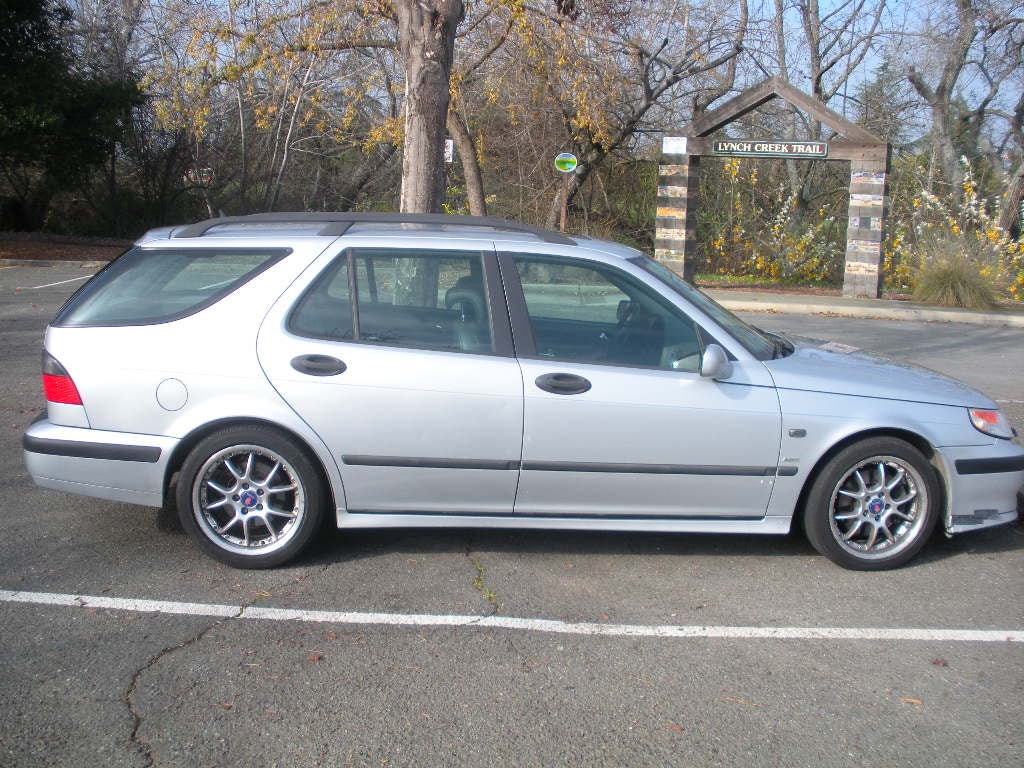
The midsize Saab 9-5 is meant to appeal to buyers desiring a midsize entry-level luxury car with a strong theme of Swedish design. Through the years, the 9-5 has been available in several trim levels -- the high-performance Aero being the most familiar -- and in both sedan and wagon body styles.
Our editors initially thought pretty highly of the Saab 9-5 at its debut in 1999. But as the years have gone on, other manufacturers have redesigned their entry-level luxury cars for better performance and comfort and more advanced features. In an entry-luxury sedan comparison test conducted about five years ago, we ranked the 9-5 last in a group of six cars.
The Saab 9-5 has not been redesigned since its debut, though it did receive a recent update for the 2006 model year that included an exterior face-lift, a retuned suspension and a new control layout. However, we still find fault with the 9-5's choppy ride quality on uneven pavement and unrefined power delivery from its turbocharged, 2.3-liter engine. In addition, wind and road noise levels are higher than they should be in an entry-level sedan and wagon.
While the 9-5 SportCombi wagon is still a reasonable choice for family use or as an SUV alternative, given its sizable cargo capacity, in general the 9-5 is outclassed by its competition when it comes to what's important: refined luxury and engaging performance.
Current Saab 9-5
The entry-level luxury Saab 9-5 midsize sedan and SportCombi wagon are available in 2.3T and Aero trim levels. A turbocharged 2.3-liter inline four-cylinder rated at 260 horsepower and 258 pound-feet of torque powers all 9-5s. A five-speed manual transmission is standard; optional is a five-speed automatic with Sport and Manual modes.
Although the standard 2.3T equipment list includes most major luxury amenities, including heated leather seats, dual-zone automatic climate control and Harman Kardon sound, the Aero trim level is a worthwhile upgrade. It fits the car with a sport-tuned suspension that improves the car's handling capabilities. All 9-5 models feature active head restraints and front-seat side-impact airbags (that protect both heads and torsos), antilock disc brakes and stability/traction control. Unfortunately, the midsize Saab offers no airbag protection for rear-seat occupants.
Most drivers will find the Saab 9-5's seats exceptionally comfortable, especially those equipped with optional heating and ventilation. Materials quality could use improvement in some areas, but passenger room is excellent all around. A split-folding rear seat and nearly 16 cubic feet of trunk space give the 9-5 an added level of versatility; the SportCombi wagon supplies up to 73 cubic feet of cargo space for those with lots to carry.
Recent chassis upgrades provide perceptively improved handling, and together with a relatively low curb weight, give the Saab 9-5 a nimble feel through the corners. Competitors have sharper reflexes, though, and torque steer remains an issue under hard acceleration due to its front-wheel-drive layout. Ride quality is reasonably smooth, but still a little harsh over bumps.
Past Saab 9-5 Models
The Saab 9-5 sedan debuted in 1999 as a replacement for the 9000 and has undergone a few revisions since then. The 9-5 retained much of its predecessor's distinctive lines, but replaced the 9000's five-door hatchback design with a more traditional four-door sedan arrangement. The wagon variant followed a year later. In the beginning, the 9-5's lineup consisted of a base 9-5 model, an SE version packed with amenities and a performance-oriented Aero model.
The standard 2.3-liter turbo four-cylinder in the Saab 9-5 base models produced 185 hp (170 hp for '99) and was mated to a five-speed manual or optional four-speed automatic transmission. The 9-5 Aero versions featured a 230-horse, 2.3-liter turbo four with a manual transmission. Initially, the 9-5 SE could be powered by either the light-pressure 2.3-liter (170 hp) or a 200-hp, 3.0-liter turbo V6, but starting with the 2000 model year, all SEs had the V6 and the four-speed automatic.
Although it looked similar, the 2002 9-5 underwent extensive reworking. Three distinct models (Linear, Arc and Aero) now had their own style and equipment specs: The previous year's base model became the Linear and offered the 185-hp turbo four, while the SE became the luxury-oriented Arc and had the turbo V6. In addition, a new five-speed automatic was available across the line, and the 9-5 Aero got a power boost to 250 hp. Revisions to steering and suspension helped dynamic performance, while electronic stability control and adaptive front airbags further improved safety. From a used-vehicle purchasing standpoint, going with an '02 or newer Saab 9-5 is probably a good idea.
Detail changes carried through to 2004, when feature content was shuffled. The Linear model was made a wagon-only trim level and the Arc model dropped its 200-hp V6 in favor of a 220-hp turbo-4. DVD-based navigation was added to the 2005 options list, and in '06, the 9-5 received updated exterior styling, a revised suspension and a slight hp boost to the high-output 2.3-liter turbo-4. Additionally, the wagon was renamed the SportCombi, and the familiar Linear, Arc and Aero trim levels went away in favor of 2.3T and Aero for both the sedan and wagon.







